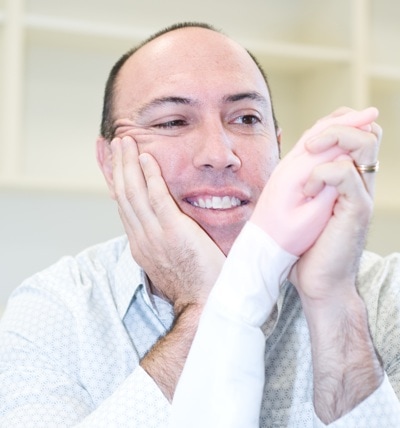I know that many of you out there are ‘in the ‘hood’ with respect to writing and reviewing manuscripts. For the rest of you, here are some reviews we got on a paper concerning the development of CRPS. I have had to remove some bits because they give away the journal and the study, which we will resubmit somewhere else. However, I think they are worth putting out there because they are very informative about the different viewpoints on CRPS that are held within the community. Also, both reviewers raise some interesting questions that I had not encountered before, or at least for a very long time. Our objective here is to provoke a conversation about CRPS, so we have finished it off with some questions, rather than answers.
On the first submission, we had 4 reviews. This is one more than usual – some journals use 2 reviewers. It is not unusual to get disparate views too – for this paper, Reviewer #1 was very positive, made a few helpful suggestions and asked for clarifications of some points. However, Reviewer 2 was not.
Here is an excerpt from Reviewer #2:
CRPS is an illness construction that cannot be reliably diagnosed or distinguished from other conditions (such as disuse after trauma) and for which there is no objective test or reference standard. Descriptive terms such as disproportionate pain and disability are therefore preferable.
I think that this conception does us a disservice. I think it’s more accurate to say that humans feel protective and prepare for the worst when they are in pain, particularly after an injury. The recovery process is counterintuitive and some people take longer to trust their arm and overcome the protective instincts than others. The duration and severity of pain, stiffness, swelling, and disability is determined by each individual’s shift in mindset from damaged vulnerable person to recovering capable person.
What your formulation suggests is that a subset of patients develop a physiological illness that is beyond their control, which we currently call CRPS. That the treatment will come from outside themselves and that they have little or no control over their health and wellbeing. There is no evidence for this and telling them this story will discourage them from developing the self-efficacy needed to recover. It will make them feel more passive and helpless when feeling passive and helpless is the very heart of the illness. This story reinforces catastrophic thinking and we need to stop telling it.
Here’s a better story to tell: …Catastrophic thinking is a normal aspect of human illness behavior and learning to separate thoughts from facts (in other words, you are injured and your wrist will be impaired, but you can depend on it and get your life back) greatly assists recovery. I would love your study and it would be better science and more in line with the weight of current best evidence if you approached it from this perspective.
Reviewer #3 also had a reservation, which related to the definition of CRPS and the potential importance of the presence or not of nerve lesion. Here is their review:
The problem lies in the definition of CRPS: I remain unsure, and unconvinced, since the reading of this manuscript, as to whether or not there were any (or even a majority) of patients that had CRPS Type 2: that is, whether or not there was a preponderance of patients that had “CRPS” because of an identifiable lesion of the peripheral nervous system such as SBRN compression, Guyon canal compression of the ulnar nerve or CTS. No physical examinations were done for these entities, and there has been retrospective work published that seems to indicate that operative nerve decompression does tend to provide measurable relief in these patients.
Interestingly, the journal obtained a fourth review because of the different viewpoints of Reviewer 1, 2 and 3. Reviewer #4 was also very positive and included this:
“I wouldn’t agree with Reviewers 3, point of view. The authors used accepted diagnostic criteria that are in the literature on this topic. I also find most of the criticisms of Reviewer 2 largely irrelevant. This review seems to be highly biased because the reviewer clearly has strong views on the topic.”
So, as you can see, one can get some pretty diverse opinions that require responses. Sometimes one’s responses to one reviewer gets another reviewer upset. That did not happen here, but our responses were not considered satisfactory by the two reviewers who were contacted – the other two reviewers presumably were not contacted because they were happy with the first submission. Reviewer 2 was very unhappy with our response that argued the case for a defined condition called CRPS:
Reviewer #2:
The authors are beholden to the concept of CRPS, which limits their ability to be objective and dispassionate, and to appreciate the work of our psychology colleagues in particular. Since the entire study is based around a diagnosis with no consensus reference standard, with wide and unwarranted variation, and the possibility that it is simply a social construction, it’s impossible to perform a scientific experiment.
Reviewer #3 was not satisfied with our view that although they might be different, the prediction of CRPS1 or 2 still followed the same rule. This is an interesting point – here is their review:
Based upon your response to my comment in the first review, you assert that even if there is a definable nerve lesion (or other definable lesion that is causing catastrophic pain), it is for all practical purposes, moot: the presence of catastrophic pain at presentation a priori condemns a patient to a poor result. I could NOT disagree more. It essentially absolves the surgeon of any diagnostic responsibility in terms of a patient with severe pain. What is the surgeon’s responsibility in this circumstance? Is the presence of catastrophic pain a ‘carte blanche’ for the treater to view the patient for evermore as a likely poor result? I find this line of reasoning not only unsupported by reason, but pejorative.
I paste these things here because I thought they might spark some sensible debate about CRPS, its diagnosis, or in fact its very existence. We have had some interesting discussions recently that raise doubts over much of our language of pain, including catastrophising, peripheral and central nervous system constructs. I think new issues are raised here that make us reflect on some pretty fundamental beliefs about CRPS. In this sense, the reviews are very helpful, albeit not for publication of this paper!
I am particularly interested in responses to Reviewer #2’s suggestion that CRPS is possibly a social construction and to recognise it as a condition fails to appreciate the work of our psychology colleagues. Anyone care to reflect on that?
Reviewer #3 asks some really novel questions that I had not considered before – does the suggestion that CRPS1 and CRPS2 might both relate to initial pain absolve the surgeon of diagnostic responsibility?
All sincere and constructive comments most welcome.
About Lorimer Moseley
 Lorimer is NHMRC Senior Research Fellow with twenty years clinical experience working with people in pain. After spending some time as a Nuffield Medical Research Fellow at Oxford University he returned to Australia in 2009 to take up an NHMRC Senior Research Fellowship at Neuroscience Research Australia (NeuRA). In 2011, he was appointed Professor of Clinical Neurosciences & the Inaugural Chair in Physiotherapy at the University of South Australia, Adelaide. He runs the Body in Mind research groups. He is the only Clinical Scientist to have knocked over a water tank tower in Outback Australia.
Lorimer is NHMRC Senior Research Fellow with twenty years clinical experience working with people in pain. After spending some time as a Nuffield Medical Research Fellow at Oxford University he returned to Australia in 2009 to take up an NHMRC Senior Research Fellowship at Neuroscience Research Australia (NeuRA). In 2011, he was appointed Professor of Clinical Neurosciences & the Inaugural Chair in Physiotherapy at the University of South Australia, Adelaide. He runs the Body in Mind research groups. He is the only Clinical Scientist to have knocked over a water tank tower in Outback Australia.
Link to Lorimer’s published research here. Downloadable PDFs here.



